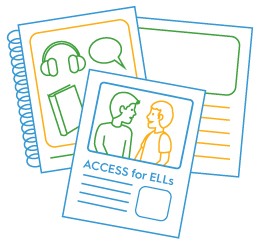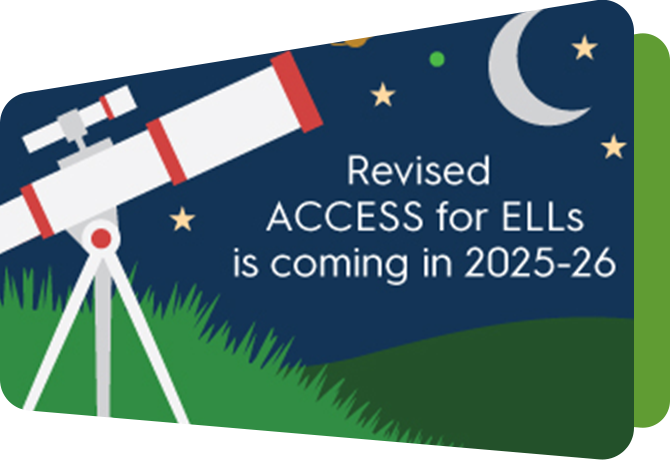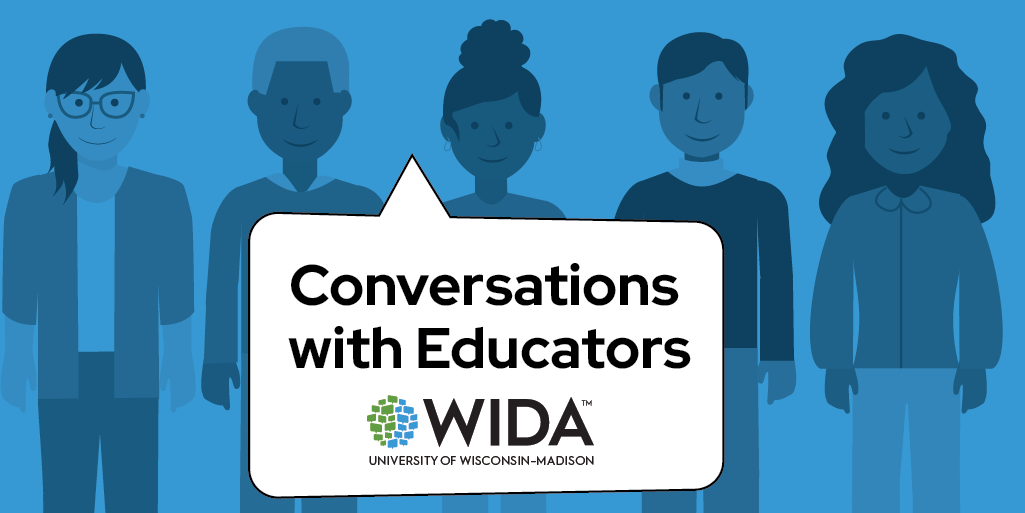Resources/Recursos
Featured Resources



All resources/Todos los recursos
Filter resources by:
Resources/Recursos
Connecting Experiences and Learning Through Language in the Marco DALE: Key Language Use Relatar
This WIDA Snapshot introduces relatar, the first Key Language Use of the Marco de los estándares del desarrollo auténtico del lenguaje español de WIDA (Marco DALE), WIDA’s Spanish language development framework. Relatar helps educators provide a purpose for language use as students develop their ability to describe personal experiences and stories. This is the first in a four-part series of WIDA Snapshots on the Key Language Uses of the Marco DALE: relatar, informar, explicar and argumentar.
Resource DetailsReleased October 2025
Constructing and Defending Ideas Through Language in the Marco DALE: Key Language Use Argumentar
This WIDA Snapshot introduces argumentar, the fourth Key Language Use of the Marco de los estándares del desarrollo auténtico del lenguaje español de WIDA (Marco DALE), WIDA’s Spanish language development framework. Argumentar helps students develop the language necessary for critical thinking, evidence-based discourse and reasoning. This is the last in a four-part series of WIDA Snapshots on the Key Language Uses of the Marco DALE: relatar, informar, explicar and argumentar.
Resource DetailsReleased October 2025
Building Connections and Understanding Through Language in the Marco DALE: Key Language Use Informar
This WIDA Snapshot introduces informar, the second Key Language Use of the Marco de los estándares del desarrollo auténtico del lenguaje español de WIDA (Marco DALE), WIDA’s Spanish language development framework. Informar supports students’ ability to convey factual information in a clear and organized way. This is the second in a four-part series of WIDA Snapshots on the Key Language Uses of the Marco DALE: relatar, informar, explicar and argumentar.
Resource DetailsReleased October 2025
Discovering the How and the Why of the World Through Language in the Marco DALE: Key Language Use Explicar
This WIDA Snapshot introduces explicar, the third Key Language Use of the Marco de los estándares del desarrollo auténtico del lenguaje español de WIDA (Marco DALE), WIDA’s Spanish language development framework. Explicar allows students to develop language skills to help their audience comprehend the how and why of a concept. This is the third in a four-part series of WIDA Snapshots on the key language uses of the Marco DALE: relatar, informar, explicar and argumentar.
Resource DetailsReleased October 2025
Awareness in Action
This WIDA Snapshot offers an introduction to awareness, one of the six ABCs of Family and Community Engagement. The ABCs of Family and Community Engagement are six key considerations for educators who support multilingual learners and their families and communities.
Resource DetailsReleased August 2025
Advocacy in Action
This WIDA Snapshot offers an introduction to advocacy, one of the six ABCs of Family and Community Engagement. The ABCs of Family and Community Engagement are six key considerations for educators who support multilingual learners and their families and communities.
Resource DetailsReleased August 2025
Building Trust in Action
This WIDA Snapshot offers an introduction to building trust, one of the six ABCs of Family and Community Engagement. The ABCs of Family and Community Engagement are six key considerations for educators who support multilingual learners and their families and communities.
Resource DetailsReleased August 2025
Plan Curriculum, Instruction and Classroom Assessment With the WIDA Language Charts
This WIDA Snapshot provides guidance on how to use the WIDA Language Charts to collaborate and plan instruction.
Resource DetailsReleased August 2025
The Marco ALE de WIDA: A sociocultural approach to the creation of Spanish language arts standards
This WIDA Snapshot introduces the Marco de referencia de las artes del lenguaje del español de WIDA: Aplicación para la actualización y desarrollo de estándares (Marco ALE). The Marco ALE is a Spanish language arts framework and is designed to support the development of Spanish language arts standards specifically for educational settings in the United States.
Resource DetailsReleased May 2025
Understanding the Proficiency Level Descriptors of Marco DALE
Los descriptores del desempeño lingüístico in Marco DALE provide guidance on how bi/multilingual students can develop language that they can interpret, interact and express in each of the communication modes (interpretative, interactive and expressive).
Resource DetailsReleased February 2025
Action Research: A catalyst for comprehensive teaching and learning in multilingual contexts
This WIDA Snapshot introduces classroom action research – when researchers and educators work together to address classroom challenges – by encouraging teachers to use their researcher voices to make meaningful contributions to the field, whether through collaborative or independent approaches.
Resource DetailsReleased February 2025
Building on Students’ Cultural and Linguistic Assets
Many literacy programs were not designed to effectively use multilingual students’ knowledge, skills, and strengths. This Snapshot is the first in a five-part series that provides insights from relevant research and suggests ways to engage the significant strengths that multilingual learners bring to their literacy development.
Resource DetailsReleased January 2024
Developing Oral Language Comprehension
Many literacy programs were not designed to effectively use multilingual students’ knowledge, skills, and strengths. This Snapshot is the second in a five-part series that provides insights from relevant research and suggests ways to engage the significant strengths that multilingual learners bring to their literacy development.
Resource DetailsReleased January 2024
Developing Reading Comprehension and Academic Literacies
Many literacy programs were not designed to effectively use multilingual students’ knowledge, skills, and strengths. This Snapshot is the fourth in a five-part series that provides insights from relevant research and suggests ways to engage the significant strengths that multilingual learners bring to their literacy development.
Resource DetailsReleased January 2024
Expanding and Strengthening Vocabulary and Word Knowledge
Many literacy programs were not designed to effectively use multilingual students’ knowledge, skills, and strengths. This Snapshot is the third in a five-part series that provides insights from relevant research and suggests ways to engage the significant strengths that multilingual learners bring to their literacy development.
Resource DetailsReleased January 2024
Fostering Equitable Literacy Learning
Many literacy programs were not designed to effectively use multilingual students’ knowledge, skills, and strengths. This Snapshot is the fifth in a five-part series that provides insights from relevant research and suggests ways to engage the significant strengths that multilingual learners bring to their literacy development.
Resource DetailsReleased January 2024
WIDA Proficiency Level Descriptors: Informing Expectations and Scaffolding
This Snapshot will give K-12 educators ideas on how to apply the Proficiency Level Descriptors as they consider scaffolding practices that support multilingual students in meeting grade level content learning goals.
Resource DetailsReleased November 2023
Gathering and Reflecting on Families’ Language and Cultural Goals
This WIDA Snapshot focuses on how you can gather information and reflect on the language and cultural goals families have for their children.
Resource DetailsReleased November 2022
Engaging with Families of Young Multilingual Children
This WIDA Snapshot is grounded in WIDA’s ABCs of Family Engagement and can be used to initiate reflection and conversation on local efforts to engage with families of multilingual children.
Resource DetailsReleased August 2022
Planning for Languaging and Learning
In early care and education (ECE) settings, planning for multilingual children includes fostering the many ways we use language to make meaning of our environments, experiences, and learning. This WIDA Snapshot includes ideas for gathering information from families, community members, and classroom observations to use while planning.
Resource DetailsReleased April 2022




